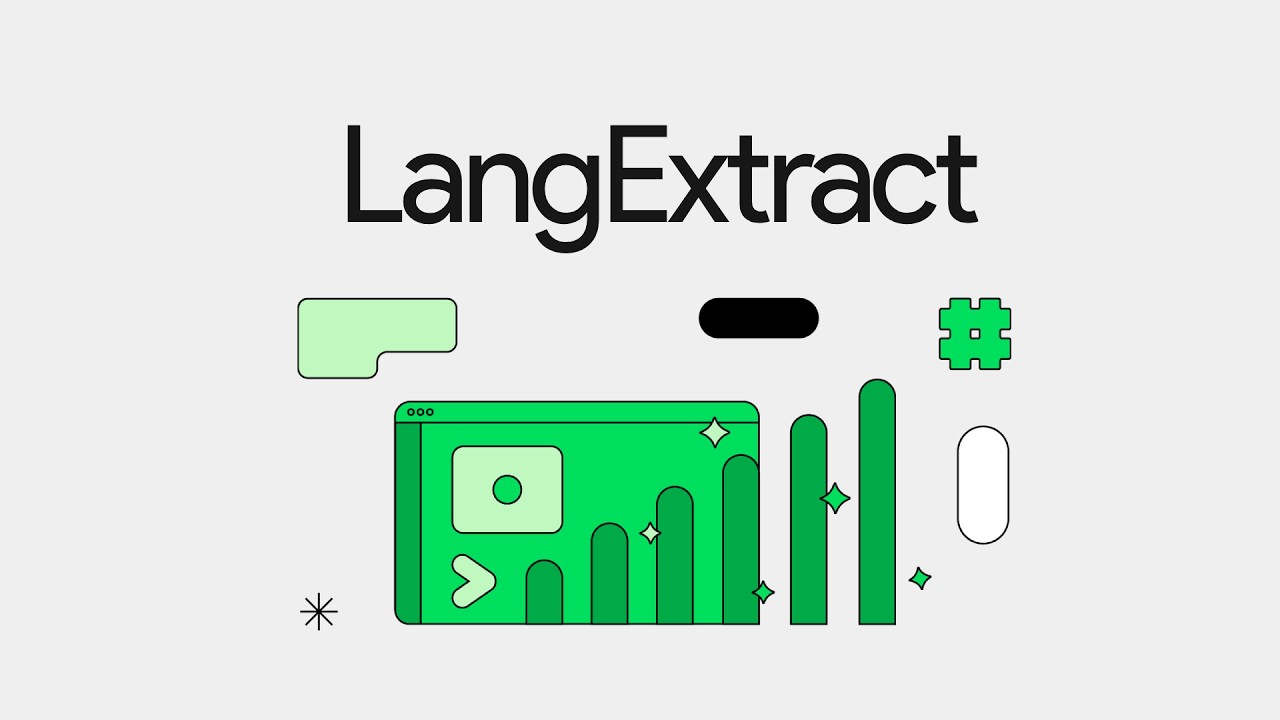The video introduces Lang Extract, a new Google library that leverages modern large language models like Gemini to simplify and enhance traditional NLP tasks such as text classification and entity extraction, offering precise source grounding and few-shot learning capabilities. Through practical demonstrations, it showcases Lang Extract’s efficiency, flexibility, and ease of use compared to older BERT-based workflows, making it a powerful tool for scalable and accurate information extraction in real-world applications.
The video introduces Lang Extract, a new library from Google designed to simplify and enhance traditional natural language processing (NLP) tasks such as text classification, sentiment analysis, and named entity extraction. The presenter begins by discussing the evolution of NLP models, highlighting how BERT models, which emerged around 2018-2019, were once the standard for these tasks. BERT utilized the encoder part of the transformer architecture and was effective for fine-tuning on specific NLP tasks, despite limitations like a relatively small context window. Over time, smaller distilled versions of BERT were used in production for various extraction and classification tasks.
However, the presenter notes a recent shift where many companies are moving away from BERT-like models in favor of large language models (LLMs) such as GPT-4 Mini or Google’s Gemini Flash. These LLMs, accessed via APIs, offer comparable results for many NLP tasks and are becoming more cost-effective and operationally efficient, especially since they reduce the need for dedicated maintenance teams. Lang Extract is introduced as a tool built specifically to leverage these modern LLMs for information extraction, providing precise source grounding by not only extracting entities but also pinpointing their exact locations in the text to minimize hallucinations and errors.
Lang Extract supports few-shot learning, allowing users to provide example inputs and expected outputs to guide the model in extracting relevant information. The library is designed to handle large volumes of text efficiently, making it suitable for processing long documents. It also offers visualization tools to help users review and validate extracted data. While optimized for Google’s Gemini models, Lang Extract is flexible enough to work with other open-source models, making it a versatile choice for various NLP applications.
The video includes a practical demonstration using Lang Extract on sample texts, including Shakespeare’s Romeo and Juliet and a TechCrunch article. The presenter shows how to define extraction prompts, provide few-shot examples, and run the extraction process using different Gemini models. The extracted data includes entities like character names, emotions, relationships, company names, AI models, and products, all returned in structured JSON format. The presenter highlights the ease of use compared to traditional BERT workflows, which required extensive data collection and model training.
In conclusion, Lang Extract is presented as a powerful, user-friendly library that leverages modern LLMs to perform traditional NLP tasks more efficiently and accurately. It offers a streamlined approach to information extraction that can be quickly deployed in real-world scenarios, such as news analysis or financial data extraction. The presenter encourages viewers to experiment with the library, adjust prompts for improved accuracy, and consider using Lang Extract to generate training data for smaller, specialized models if needed. Overall, Lang Extract represents a significant step forward in making NLP tasks accessible and scalable using the latest AI technologies.
